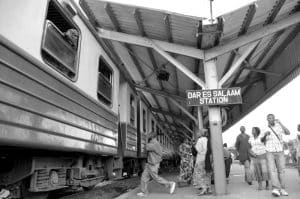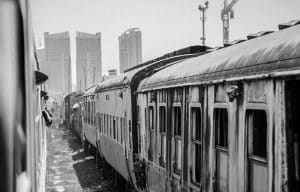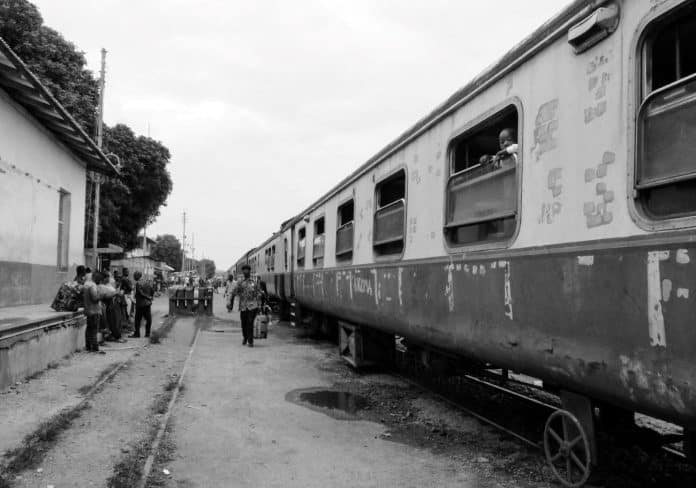Introduction to Dar es Salaam
Dar es Salaam, the bustling commercial capital of Tanzania, is a city that holds a special place in the heart of the country’s transportation network. Dar es salaam As the starting point of the renowned Central Line, this vibrant metropolis serves as the gateway to a remarkable rail journey that traverses the heart of Tanzania. Whether you’re a seasoned traveler or a newcomer to the region, the city’s rich history, diverse culture, and captivating sights make it a must-visit destination.
The significance of the Central Line in Tanzania

The Central Line, a vital component of Tanzania’s railway system, is more than just a mode of transportation. It is a lifeline that connects the country’s diverse regions, facilitating the movement of people, goods, and ideas. This iconic rail network plays a crucial role in the nation’s economic and social development, linking the coastal city of Dar es Salaam to the heartland of Tanzania.
History and development of the Central Line
The origins of the Central Line can be traced back to the late 19th century, when the German colonial administration began constructing the railway to connect the coast with the interior. Over the decades, the line has undergone numerous expansions and modernizations, adapting to the changing needs of the country. Today, the Central Line stands as a testament to Tanzania’s commitment to improving its transportation infrastructure and fostering greater connectivity within the nation.
Exploring the Dar es Salaam Central Railway Station
At the heart of the Central Line’s journey is the Dar es Salaam Central Railway Station, a bustling hub of activity and a gateway to the rest of the country. This iconic structure, with its distinctive colonial-era architecture, serves as the starting point for countless travelers embarking on their Central Line adventure. As you step into the station, you’ll be immersed in the sights, sounds, and energy of this vibrant transportation hub.
Journeying on the Central Line: Routes and destinations
The Central Line offers a diverse array of routes and destinations, each with its own unique charm and appeal. From the bustling city of Dar es Salaam, the line stretches inland, connecting to major towns and cities such as Morogoro, Dodoma, and Tabora. Along the way, you’ll witness the stunning landscapes of Tanzania, from the lush green hills to the vast, arid plains. Whether you’re traveling for business or leisure, the Central Line provides a comfortable and efficient way to explore the heart of the country.
Experiencing the sights and sounds of the Central Line

A journey on the Central Line is more than just a mode of transportation; it’s a cultural experience that immerses you in the rhythms and traditions of Tanzania. As the train winds its way through the countryside, you’ll be treated to a mesmerizing display of the country’s natural beauty, from the rolling hills to the bustling villages that dot the landscape. Along the way, you’ll have the opportunity to interact with fellow passengers, exchange stories, and gain a deeper understanding of the local way of life.
Challenges and improvements of the Central Line
While the Central Line has played a vital role in Tanzania’s transportation network, it has also faced its fair share of challenges over the years. Aging infrastructure, limited funding, and operational inefficiencies have all contributed to the line’s struggles. However, the Tanzanian government and railway authorities have been working tirelessly to address these issues, investing in modernization and upgrades to improve the overall experience for travelers.
Tips for traveling on the Central Line
Embarking on a journey along the Central Line requires a bit of preparation and planning. Here are some tips to help you make the most of your experience:
- Book your tickets in advance: Central Line trains can be quite popular, especially during peak travel seasons, so it’s best to book your tickets well in advance to secure your seat.
- Pack light: The luggage space on the trains can be limited, so try to pack only the essentials to make your journey more comfortable.
- Bring snacks and water: While the trains do offer food and beverage services, it’s a good idea to pack some of your own snacks and water to ensure you have sustenance during the trip.
- Dress comfortably: The trains can get a bit warm, so wear lightweight, breathable clothing to stay comfortable.
- Bring entertainment: Long train rides can be a great opportunity to catch up on reading, listen to music, or simply gaze out the window at the passing scenery. Pack a few diversions to keep yourself entertained.
Other attractions and activities in Dar es Salaam
While the Central Line may be the primary draw for many visitors to Dar es Salaam, the city itself offers a wealth of other attractions and activities to explore. From the bustling Kariakoo Market, where you can immerse yourself in the local culture and shop for unique souvenirs, to the serene beaches of Msasani Peninsula, Dar es Salaam is a city that caters to a wide range of interests and preferences.
Conclusion: Dar es Salaam and the Central Line – a journey to remember
Dar es Salaam and the Central Line are inextricably linked, offering travelers a unique and unforgettable experience. Whether you’re drawn to the city’s bustling energy or the serene beauty of the countryside, a journey on the Central Line promises to leave a lasting impression. So pack your bags, board the train, and embark on a adventure that will take you deep into the heart of Tanzania – a journey you’ll never forget.
For more articles related to Railway and train travel Tanzania, click here!

































